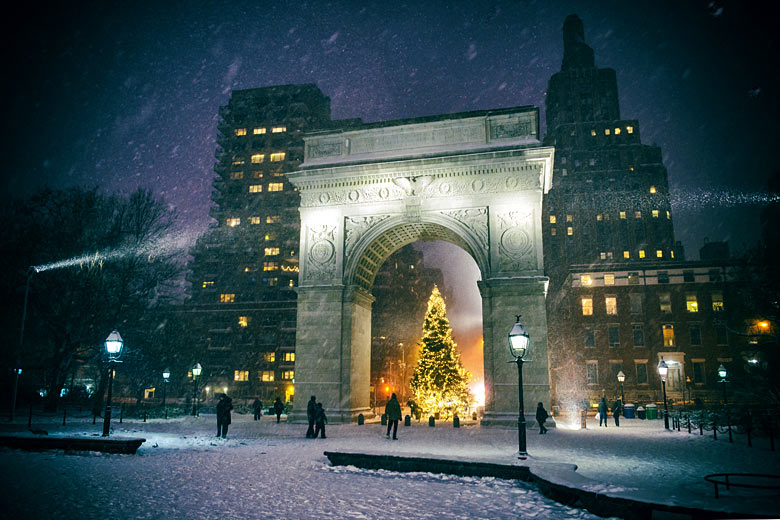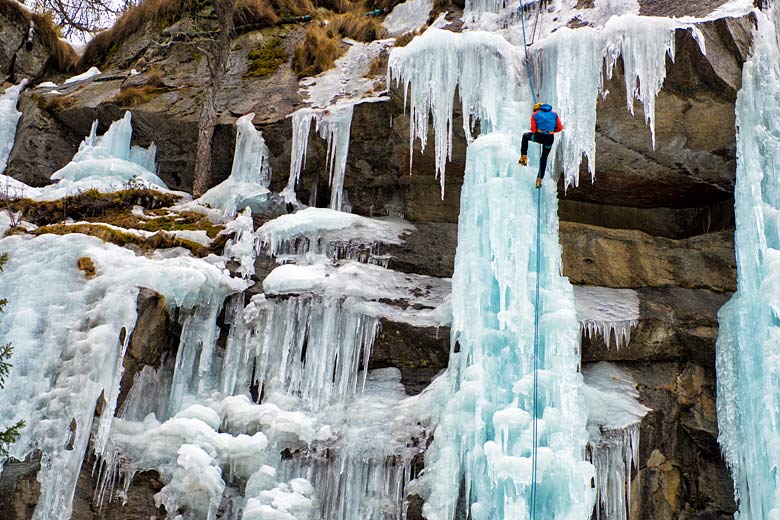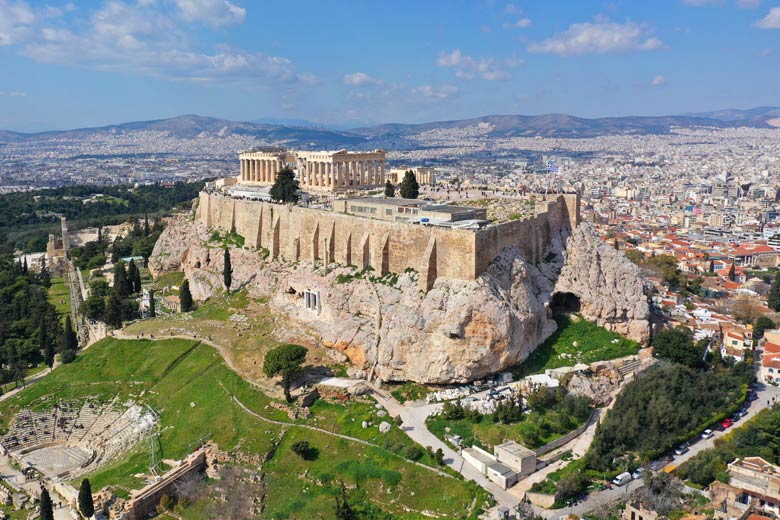Hvar or Brac: which Croatian island should you visit?
They're Dalmatia's two biggest islands and two of Croatia's heavy hitters. But which should you plump for, Hvar or Brač? The choice is a tough one.
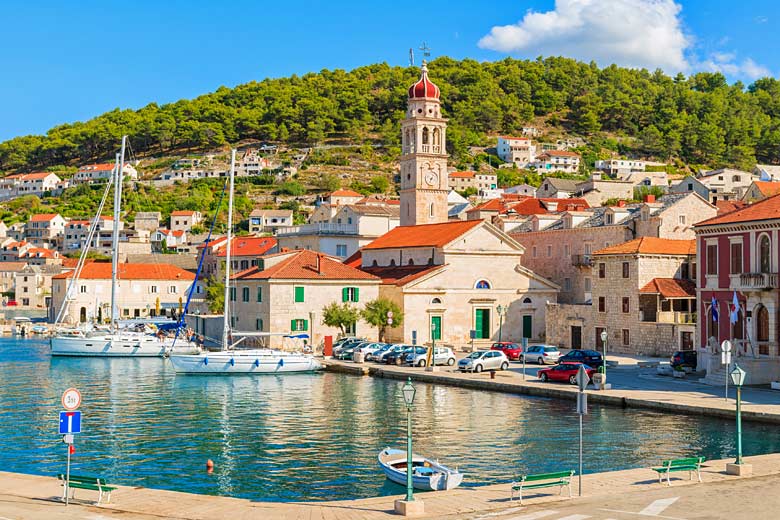
They're both easily accessible from Split*, with regular ferries and passenger-only catamarans shuttling back and forth several times a day.
Hvar lays claim to being the sunniest island in Croatia*, but Brač has its world-famous Zlatni Rat beach, one of the first images that comes to mind when you think of Croatia's fabulous Adriatic coast. So, which is better? We've done a comparison to help you decide.
Getting to Croatia: see the current offers on escapes to Croatia with Jet2holidays*.
Beaches
Brač comes out fighting on this particular front. Sinuous V-shaped Zlatni Rat hanging from the southern coast subtly changes shape with the tides, its gleaming white pebbles resembling sand if viewed from above.
The reality isn't always as idyllic as the images suggest, though. During the peak season, it's covered in sun loungers, but the pine-covered interior is a cool place (in both senses) full of beach bars.
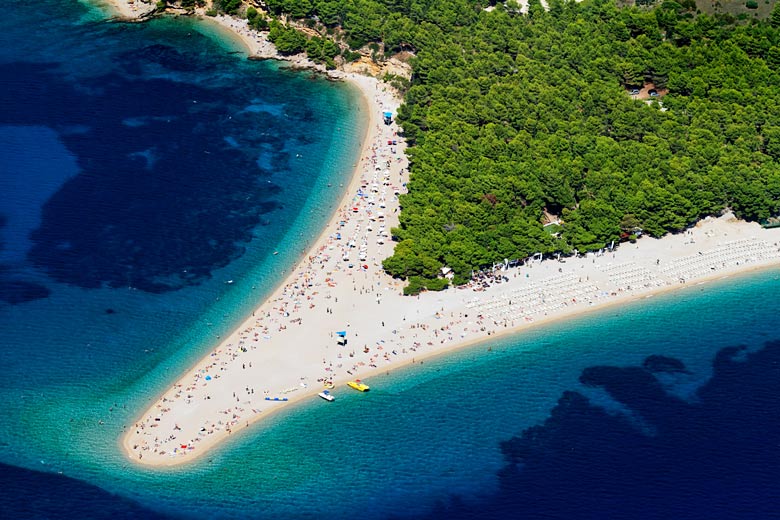
There are plenty of quieter and wilder beaches nearby, including Murvica, Vela Planica and Velo Forska. And that's just the southern coast. Check out the coves and beaches around the ports of Sutivan on the north coast and Milna on the west.
Meanwhile, Hvar has been developing a reputation as a Croatian Ibiza, with glitzy beach clubs around Hvar Town. The most infamous is Carpe Diem, which in the summer expands to Marinkovac in the Pakleni Islands where the party goes on all night long.
But Hvar Town does laid-back too; try the nearby beaches of Dubovica or Mekićevica. Or venture to the pretty village of Jelsa whose Mina Beach is one of the few sandy ones around (for the other pebbly and rocky beaches, you're best wearing swimming shoes).
Hvar's incredibly rugged coast means there's a huge supply of intimate coves tucked under pine cliffs, many of them best accessed by boat.
Village feels
Bol on Brač's southern coast is more than just a gateway to Zlatni Rat. Its lively waterfront is lined with restaurants and squares where summertime festivals are held.
Along the crazily indented northern coast, look out for Pučišća. Hard to pronounce, easy to love, Pučišća is set in a deep inlet and, like much of Dalmatia, is filled with pretty Venetian-style stone houses.
In fact, the village is also home to one of Europe's few stonemasons' schools, whose students learn this ancient art using stone from the village quarry. Along with the attractive seaside villages of Milna and Sutivan, there's the main ferry port of Supetar and its buzzing café-lined harbour.
Many visitors to Hvar* don't go beyond Hvar Town, which is their loss. While the island capital has many charms, it also has more than its fair share of tourists crowding the compact harbour area.
For a change of scenery, head over to Stari Grad, which, in spite of being Hvar's main ferry port, is wonderfully relaxed and low-key. It's also handy for visiting the colourful villages of Vrboska and Jelsa, the latter surrounded by a string of family-friendly beaches.
Food & wine
You won't go hungry on either island, with both producing exquisite Dalmatian cuisine; lots of fresh fish and seafood, excellent cheeses and smoked meats, meltingly slow-cooked lamb and octopus, all accompanied by local wines including plavac reds and pošip whites.
Head inland to find a rustic konoba, a traditional restaurant where most of the produce is home-grown and meats are roasted over a spit or slowly cooked under embers in a cast-iron bell-shaped pot called a peka.
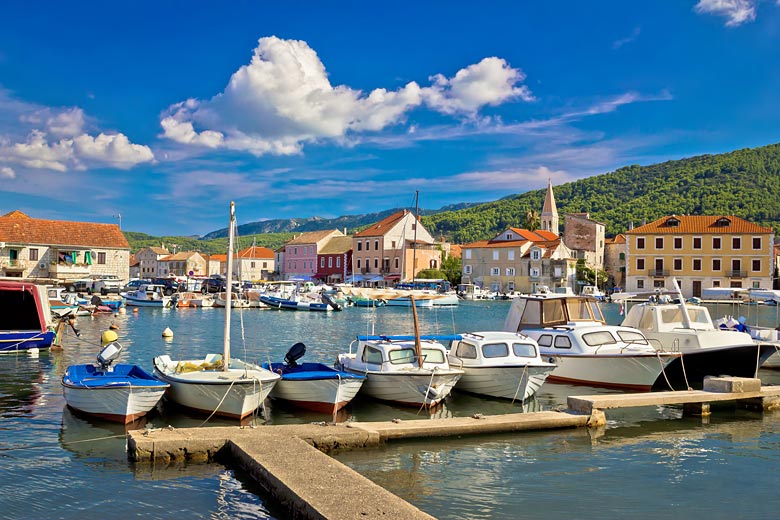
In the hinterlands of Brač*, take in the theatre of the open kitchen of Konoba Kopačina where meats are grilled in flamboyant style.
From here it's a quick jaunt to the Olive Oil Museum, an entertaining and enlightening window on the history of the olive. Not surprisingly, they offer a delicious and generous tasting tour, so save some room for lunch.
Drive through Hvar's fragrant lavender fields to reach Konoba Kokot in the hamlet of Dol and feast on tender octopus cooked slowly in a peka. Try a bottle of Hvar's own indigenous bogdanuša white wine, which aptly translates as a gift from God.
In the tiny inland tongue-twisting village of Zastražišće, Family Farm kod Kućera serves its own produce in a peaceful hilltop setting where donkeys and goats roam freely.
Historic sights
One of Brač's most compelling sights takes a bit of effort to reach, but it's worth it. The 16th-century Blaca Hermitage was built into the cliffs on the southwestern side of the island, and it takes a moment to see where the cliffs end and the monastery begins.
Either hike from the car park or, more entertainingly, sail or kayak to Blaca Bay and take a scenic trek through the rocky valley. In the island's oldest settlement, Škrip, discover ancient history in Brač Island Museum housed in a Venetian fortification that includes an Illyrian wall and a Roman mausoleum.

Hvar's history is plain to see. Walk or drive up to the 16th-century Fortica Fortress in Hvar Town to take in some of the most sublime views of the town and surrounding islands.
Revel in the beauty of the Baroque St Stephen's Cathedral in Hvar Town's handsome main square, which is also home to Europe's first public theatre, an impossibly cute little structure within the former arsenal.
There's more ancient history literally under your feet in Stari Grad Plain, a UNESCO-listed site where you can still see the vineyards and olive groves planted by the ancient Greeks over two millennia ago.
Active adventures
Zlatni Rat isn't the only reason why people flock to Bol. The village is one of Europe's great windsurfing spots, and also attracts kitesurfers, making use of the winds that blow along the Adriatic. Hovering above the town is Vidova Gora, the highest point in the Adriatic and a superb place to enjoy stupendous views after your hike.
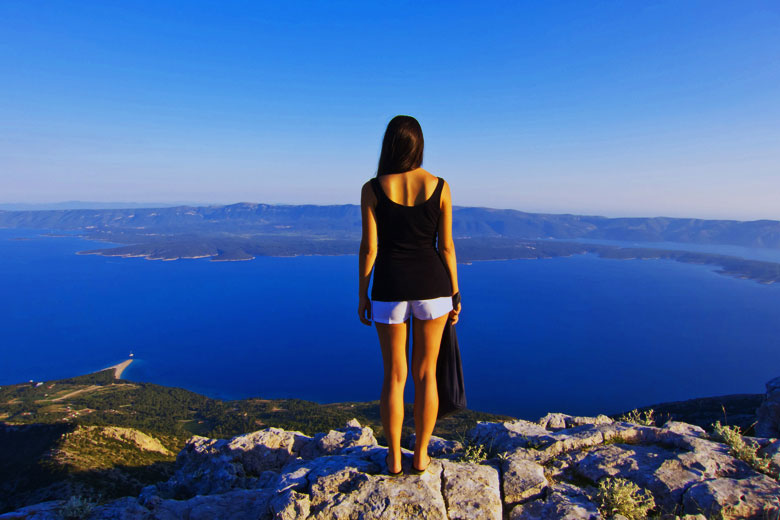
Like Brač, Hvar offers dozens of cycling routes throughout the island, from gentle flat trails through vineyards to seriously tough climbs where the sea views will keep you motivated to carry on. If you visit in May, you can watch or take part in the Hvar Half Marathon, which goes up and down the hills between Stari Grad and Hvar Town.
Climate in Croatia
| Jan | Feb | Mar | Apr | May | Jun | Jul | Aug | Sep | Oct | Nov | Dec | |
|---|---|---|---|---|---|---|---|---|---|---|---|---|
| Maximum daytime temperature °C |  9 9 |
 10 10 |
 13 13 |
 17 17 |
 21 21 |
 25 25 |
 28 28 |
 28 28 |
 25 25 |
 20 20 |
 15 15 |
 11 11 |
| Hours of sunshine (daily) | ||||||||||||
| Days with some rainfall |  13 13 |
 12 12 |
 12 12 |
 12 12 |
 11 11 |
 11 11 |
 8 8 |
 9 9 |
 9 9 |
 11 11 |
 13 13 |
 13 13 |
| Sea temperature °C |  14 14 |
 13 13 |
 13 13 |
 14 14 |
 18 18 |
 21 21 |
 24 24 |
 24 24 |
 22 22 |
 20 20 |
 18 18 |
 16 16 |
The islands of Hvar and Brač lie next to each other, separated by only a few miles. As such, above we've chosen to show the climate in Bol, Brač, which is representative of both destinations. Find out more conditions across the country in our complete guide to the climate in Croatia.
Decided which to visit first? Find the latest great value deals on escapes with Jet2holidays.
More about Croatia
- Best time to visit
- Weather by month
- 5-day weather forecast
- Destinations
- Travel guide
- Deals & discounts
Croatia by month
Jan Feb Mar Apr May Jun Jul Aug Sep Oct Nov Dec
Explore holiday destinations
- Beach holidays
- City breaks
- Family holidays
- Half term holidays
- Spring holidays
- Summer holidays
- Autumn holidays
- Winter sun holidays
- Honeymoons
- Coolcations
- Compare places
- Ski resorts
Save with latest deals & discounts
- Holiday offers
- Top travel brands
- Airlines & flights
- Discount hotels
- TUI
- Jet2holidays
- Neilson
- Marella Cruises
- Pierre & Vacances
- Caledonian Travel
- Club Med
- Black Friday sales
Airport parking
- Manchester Airport
- Stansted Airport
- Bristol Airport
- Luton Airport
- Birmingham Airport
- Edinburgh Airport
- Gatwick Airport
- Glasgow Airport
- Newcastle Airport
Airport lounges
- Manchester Airport
- Birmingham Airport
- Bristol Airport
- Edinburgh Airport
- Glasgow Airport
- Heathrow Airport
- Newcastle Airport
- Stansted Airport
- Gatwick Airport
Be inspired
Get your weekly fix of holiday inspiration from some of the world's best travel writers plus save on your next trip with the latest exclusive offers
We promise not to share your details

















